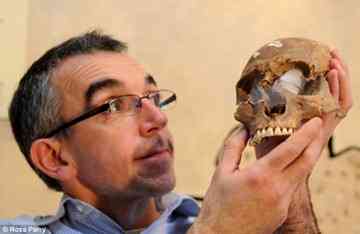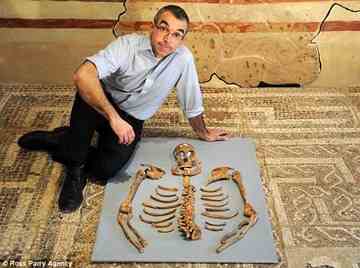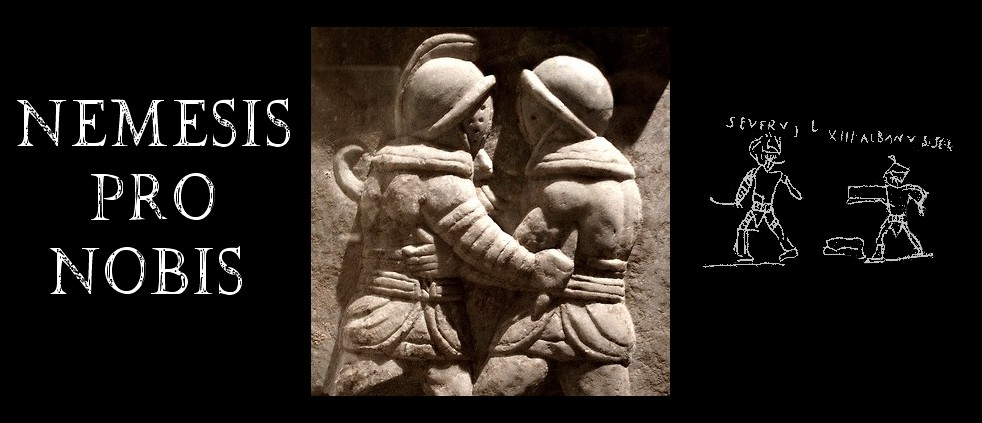Tall, powerfully-built and with a killer instinct he would have been a
fearsome sight - especially if you were a gladiator facing him in the
ring.

Archaeologists do not know his name but are convinced the remarkable
discovery of the Roman gladiator's bones in York provide a clear clue of
where the amphitheatre was in the city. Back when he was
fighting for his survival in the ring 1,600 years ago, York was the
Roman capital of the north and the ground underneath the Yorkshire
Museum has long been thought of as the prime location for the site. The
amphitheatre would have been similar to the one seen in the 2000 film
Gladiator which featured Russell Crowe as a bloodthirsty warrior. The
remains of the British gladiator were found just 30cm below the
foundations of the museum by builders carrying out refurbishment works.

He
was very tall for a Roman, standing at 5ft 10in, and of muscular build.
The average height for people living at that time was 5ft 3in. Analysis
of the bones, shows that the skeleton was once a powerful, athletic man
who was stabbed at least six times in a fatal attack - including a
powerful sword blow to the back of the head. Because of the way
his body was found without hint of burial ceremony experts believe he
could have been a disgraced or defeated gladiator who was then literally
thrown out with the rubbish after his savage death. Experts at York Osteoarchaeology have now concluded the man was aged between 36 and 45.

Andrew Morrison, head curator of the Yorkshire Museum, said: 'This was a
huge man for the Roman period who died a violent and bloody death. 'The
physical evidence reveals he was a swordsman and that his body was
literally dumped with the rubbish - there was no hint that he had been
buried in a ceremonial way. 'But what is really interesting to us
is that he was found in this area, which is not associated with Roman
burials and that many believe could be where York's amphitheatre was
located. 'It is far from certain but it could well be the case
that this man was a disgraced gladiator who was brutally killed and then
left to rot.' The skeleton was found in January by builders
carrying out work on the museum a foot below the foundations, during a
£2million refit.

Because it is also a key medieval site, the precinct of St Mary's
Abbey, excavation at the location has been limited and meant that the
Museum Gardens remains one of the few untouched areas in the city large
enough to house the amphitheatre. The scientists discovered that
he would have been a very muscular man, with lesions in his vertebrae
suggesting spinal stress, possibly through lifting heavy loads. They
also found the man met a most barbaric end. There are six blade
injuries on the skeleton which, because there are no signs of healing,
must have been delivered at death. Malin Holst, director of York
Osteoarchaeology, said: 'A wound is recognisable as one side is sharp
and smooth and the other edge is rough.' She added: 'To work out his age we looked at the degeneration of his joints and wear to his teeth. 'You can tell height by measuring a long bone like a thigh or shin bone. We knew he was muscular as the bones were shapely. Experts
have eliminated other sites in the city that may have housed the
amphitheatre and think this could be a highly significant discovery, as
the area is large enough to have accommodated a massive arena. The remains are now on public display at the museum.
Source: Mail Online [December 11, 2010]
Source : http://archaeologynewsnetwork.blogspot.com/2010/12/more-on-york-gladiator-skeleton-find.html